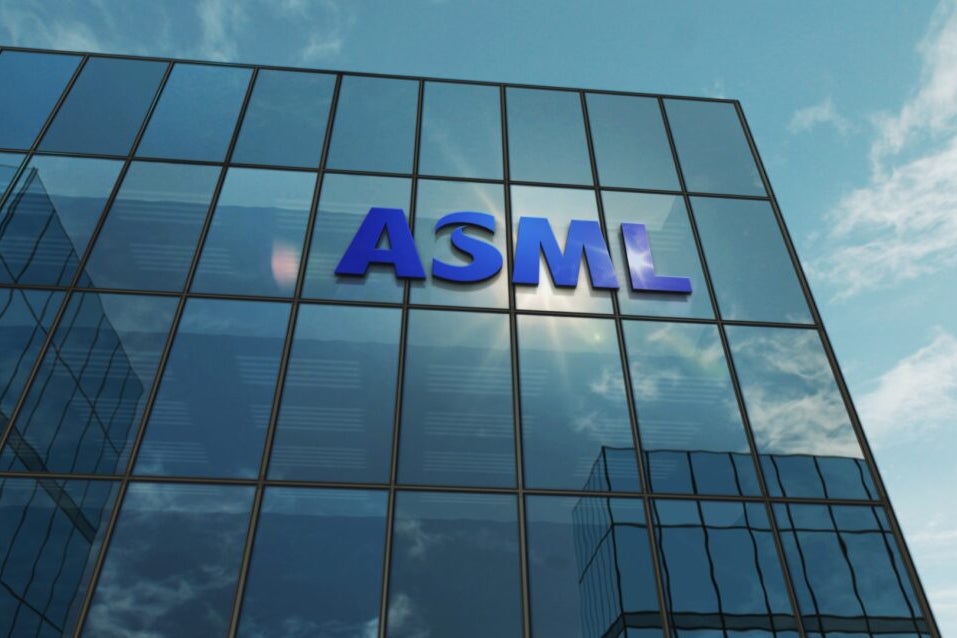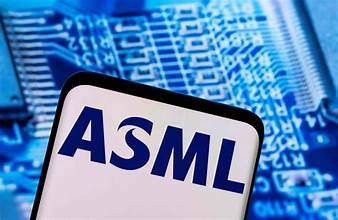ASML Shares Plunge as Bookings Miss Signals Chipmaker Woes
(Bloomberg) -- ASML Holding NV’s shares plunged the most in 26 years after it booked only about half the orders analysts expected, a startling slowdown for one of the bellwethers of the semiconductor industry.
The Dutch company, which makes the world’s most advanced chipmaking machines, lowered its guidance for 2025 and reported bookings of €2.6 billion ($2.8 billion) in the third quarter, missing an average estimate of €5.39 billion by analysts surveyed by Bloomberg.
The results caused ASML shares to plunge 16% in Amsterdam, the biggest decline since June 12, 1998. It also triggered a broad downturn in chip-related stocks, with Nvidia Corp. falling 4.5% and the benchmark Philadelphia Semiconductor Index sliding 5.3%. Makers of chip-manufacturing equipment were especially hard hit: Applied Materials Inc. and Lam Research Corp. both suffered their worst declines since 2020, and KLA Corp. had its biggest one-day drop in nearly a decade.
“It now appears the recovery is more gradual than previously expected. This is expected to continue in 2025, which is leading to customer cautiousness,” ASML Chief Executive Officer Christophe Fouquet said in the statement.
The weak results were amplified by the company mistakenly releasing its financial results a day earlier than scheduled. ASML published the release, which was expected on Wednesday, prematurely “due to a technical error,” it said in a separate statement.
The chip industry is experiencing strangely uneven times. In areas such as artificial intelligence accelerators, companies like Nvidia can’t keep up with demand. But in other sectors, including automotive and industrial, it’s in a prolonged slump with customers cutting back orders because they have too much inventory. Intel Corp. is cutting expenses in a restructuring that includes delays to planned factories in Germany and Poland, while memory chipmakers such as Samsung Electronics Co. and SK Hynix Inc. are also being careful with spending.
“While bookings are typically lumpy, we have to concede given lowered guidance that it’s looking like the delayed cyclical recovery and specific customer challenges are weighing heavily on ASML’s 2025 expectations,” said Bernstein analyst Sara Russo.
ASML lowered its guidance for 2025 total net sales to between €30 billion and €35 billion, compared to as much as €40 billion previously. Next year, the company expects a gross margin between 51% and 53%, compared to a prior range between 54% and 56%, mainly due to delayed timing for its top-end extreme ultraviolet machines, Fouquet said in the statement.
ASML didn’t give a detailed explanation of why its bookings fell so short of estimates, beyond a few delays in plant constructions. The company will hold a call with investors Wednesday.
Europe’s most valuable technology company’s shares have fallen by a third since hitting a record high in July, hurt by the prospect of more US restrictions on its business in China, as well as a broader weakness in the semiconductor sector.
“Many will debate whether this release was an accident or planned, but clearly disappointing,” Cantor Fitzgerald analyst C. J. Muse said in an emailed statement. “Weakness across Intel and Samsung is clearly leading to 2025 tracking worse than we thought,” he said.
Last month, the Netherlands published new export control rules that made ASML apply for export licenses in The Hague instead of US for some of its older machines. That came on the heels of a Bloomberg report that the Dutch government would limit some of ASML’s ability to repair and maintain its semiconductor equipment in China.
China remained ASML’s biggest market, accounting for 47% of sales in the quarter. Sales to the Asian nation jumped by nearly 20% from previous quarter to €2.79 billion.
But the demand from China may slow in the upcoming period and Washington’s ongoing chip war against Beijing continues to be a long-term overhang on ASML shares. The company could lose nearly a quarter of its sales in China next year, and 45% of its overall revenue generated in the country is at risk from further restrictions, according to UBS analyst Francois-Xavier Bouvignies.

 www.benzinga.com
www.benzinga.com




